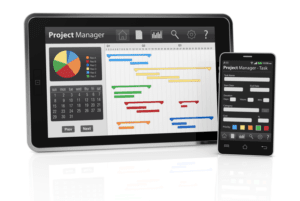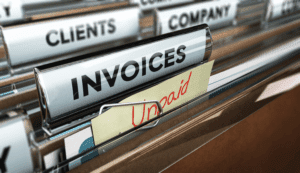
We will meet with you weekly throughout this process to ensure we https://www.facebook.com/BooksTimeInc all stay on the same page. If it looks like a good fit, we will send over a proposal for you to sign and get your winery scheduled for onboarding. We are a team of humans who believe accounting is more than just checking boxes and filing receipts. We are here to help make the finance part work, so that you can build a successful winery that will sustain itself, and you, for generations to come.
- Navigating the financial ebbs and flows of seasonal production is a unique challenge for vineyards and wineries.
- At Perkins, we understand these unique challenges and offer specialized accounting and tax services tailored to the wine industry.
- We also ensured compliance with bank reporting requirements and established strong communication with their tax preparer.
- Whether you need assistance setting up your books or preparing for tax season, we can help you navigate the complexities of the wine business.
- While other wines are left to age for a few years before being bottled and ready for sale.
- We can provide the tools and resources you need to manage your finances effectively.
- This ratio helps wineries identify areas where they might be overspending and where cost-saving measures could be implemented.
Qualified Business Income (QBI) Deduction
- By matching recent, higher costs against current revenues, LIFO can reduce taxable income, offering a tax deferral advantage.
- Conversely, utilities are usually broken down by actual consumption per production stage, unless all departments are using nearly equal amounts of energy.
- This method allocates overhead costs based on the actual activities that drive those costs, rather than simply spreading them evenly across all products.
- Industry consolidation, competition, direct-to-consumer sales strategies, and risks around smoke exposure and climate change are rapidly shifting the wine industry landscape.
- Understanding tax obligations and benefits can significantly impact a winery’s financial health and operational efficiency.
Using the simplified method referenced above, assume that the inventory costs are $800,000 at December 31, 2017. While it may seem simpler to write-off these expenses as winery accounting you incur them, it skews the true financial results of the business. Generally, profits and the assets of the business will be much lower than they really should be. Lenders are far less likely to provide funding to unprofitable businesses that also report a low asset base.

Winery accounting that helps you grow.
This includes keeping tabs on what materials and labor went into creating specific vintages and blends. Businesses resistant to innovation will find themselves left behind, especially as wineries seek to establish presences in new regions or markets. Leverage the power of IT solutions to help boost your operational efficiencies through access to comprehensive, synchronous views of your entire business. Illuminate vital data—like direct-to-consumer and wine club management, financial statistics, and personnel activities—to transform your business into a collaborative, data-driven organization. Our team has extensive experience in the wine industry and can help you navigate your books, accounting, inventory valuation and more.
Let’s get you a better winery accountant.
- By understanding how all the transactions fit together in your winery business, you can plan strategically, manage cash flow more effectively, and ensure financial stability.
- While less common in the wine industry due to its potential to undervalue older, high-quality inventory, LIFO can be advantageous in a high-inflation environment.
- One of the biggest changes under TCJA is the expanded availability of the cash method of accounting for winery businesses.
- We are here to help make the finance part work, so that you can build a successful winery that will sustain itself, and you, for generations to come.
- Winery and vineyard business owners can benefit from performing a detailed analysis of their company’s specific situation to determine which, if any, actions to take.
It’s also important that financial reporting disclosures provide transparency about inventory costing, methods, assumptions, and significant estimates. Tax accounting for wineries involves managing excise taxes, sales taxes, and import/export taxes. Proper What is bookkeeping tax accounting ensures compliance with local and federal regulations, helps avoid penalties, and can optimize tax liabilities.
Key differences between tax basis accounting and accrual basis accounting for wineries

We deliver forward-thinking business solutions, taking time to discern your unique business needs and anticipating how they may be impacted by the changing industry. We understand the operational challenges wineries face and essential success factors, such as compliance and regulatory issues, managing costs, building successful brands, and selling to consumers effectively. When your inventory is undervalued, it leads to an overall inaccurate picture of your business financial health. Your accountant can play a key role in helping you establish an appropriate accounting framework ad heping you understand how to read your financial statements. Maintaining books on a GAAP, true cost, or accrual basis, as opposed to a cash basis or tax basis, offers several significant advantages for your wineris particularly as you grow and refine your operations. We have already talked about the big advantage of accurately measuring your profitability, as opposed to simply your bank balance.
Winery Accounting Specialists

And, there can be wine shrinkage, where the wine evaporates while it’s aging in the oak barrels. And furthermore, the winery may choose to sell off some wine in bulk before it reaches the bottling process, so that a good chunk of the wine volume never makes it to the end of the process. By tracking your income and expenses and knowing your profit (or loss), you’ll have a better handle on the financial health of your business.

Valued Industry Perspectives

Pre-productive costs are the farming costs incurred between the time a vine is planted through the harvest date of the first commercially harvestable crop, typically three crop years. An eligible vineyard taxpayer has the option to expense or capitalize these costs into the basis of the vine. These changes will have a significant impact on business acquisitions in the wine industry. The difference of $1.2 million between the $2 million from the old method and the $800,000 of the new method would be taken as a deduction on the 2018 return.
